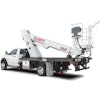Advertising is often a mystery. There are too many choices of where to place ads. It can get very expensive. Even with the best demographic analysis, no one can be sure if the target customer even sees the message, much less comprehends it. And it is very difficult to track results: Did sales pick up because of my ads, or is it because of the weather?
"Advertising is one of the most misunderstood and misused of all marketing activities for small businesses," assert Paul and Sarah Edwards, and Laura Clampitt Douglas, the authors of "Getting Business to Come to You."
As much of an enigma as this topic can be, we know advertising works extremely well for some rental businesses, and produces no tangible results for others. So how do you figure out what is best for you?
Advertising myths
Here are five common myths, as discussed in the book "Getting Business to Come to You":
- Advertising is what you have to do to get business. Fact: Advertising is only one of many ways to get business. In fact, there are many other marketing methods available that do not involve buying time or space.
- Advertising is too expensive for small businesses. Fact: Advertising doesn't have to break your budget. The high cost of most traditional advertising has actually opened the door for many less-costly avenues and techniques that can be just as effective for small businesses.
- There is one best advertising method. Fact: Advertising always begins as an experiment. Because most individuals who are in business for themselves don't have a lot of money to spend, too often they begin by putting it all into one approach to advertising that they heard worked well for someone else.
- One shot will do it. Fact: Advertising is an investment that takes time and repetition. Advertising works on what is called the Rule of Seven, which asserts that a message typically needs to be noticed by any given customer seven times before he or she will take action. The corollary to the rule is that it takes an average of three times to get noticed once. That means that you have to expose a potential customer to your products an average of 21 times before he is likely to call, come in, or place an order.
- Advertising does the work for you. Fact: You can't sit back and wait. While advertising can be marketing while you are working, it also demands that you engage in an active and interactive process with the prospective clients or customers it reaches. The more active you are in promoting yourself through all your marketing activities, the better results you will get from any advertising you do.
No universal 'goods' or 'bads' in advertising
Unfortunately, we can't tell you which advertising medium would be best for all rental businesses. The fact is, every market is different. While television advertising may be cost-prohibitive for a business in Chicago, it might be well within the budget in Chillicothe. Same for newspapers, radio and all the other marketing avenues that might be available in your area. We can, however, give you some tips to make educated choices.
We turn again to the book "Getting Business to Come to You" for insights on what to look for when investigating advertising options. Here are tips to Getting the Most Reach for Your Money:
- Verify the claim. Find out whether a medium's claimed audience is audited or unaudited. If they are audited, the numbers were confirmed by an independent entity; if unaudited, they come from the medium's management and might not be accurate.
- Get a breakdown of the audience. Carefully investigate the specific demographics of the medium's audience. Determine the categories that might truly be potential customers, and work your cost per thousand based on those numbers.
- Calculate the total cost. In calculating the cost per thousand, be sure to include total costs, including amortization of your production costs over the span of the advertising period.
- Track your response. Once you have run some advertising, despite the inherent difficulties and probable inaccuracies, try to determine approximately how many responses or reactions you got. This information will tell you whether an ad is paying for itself and which ads are bringing in the most business.
- Set a budget. Set up an advertising budget based on the percentage of your gross sales that come from advertising; then don't exceed that budget.




















